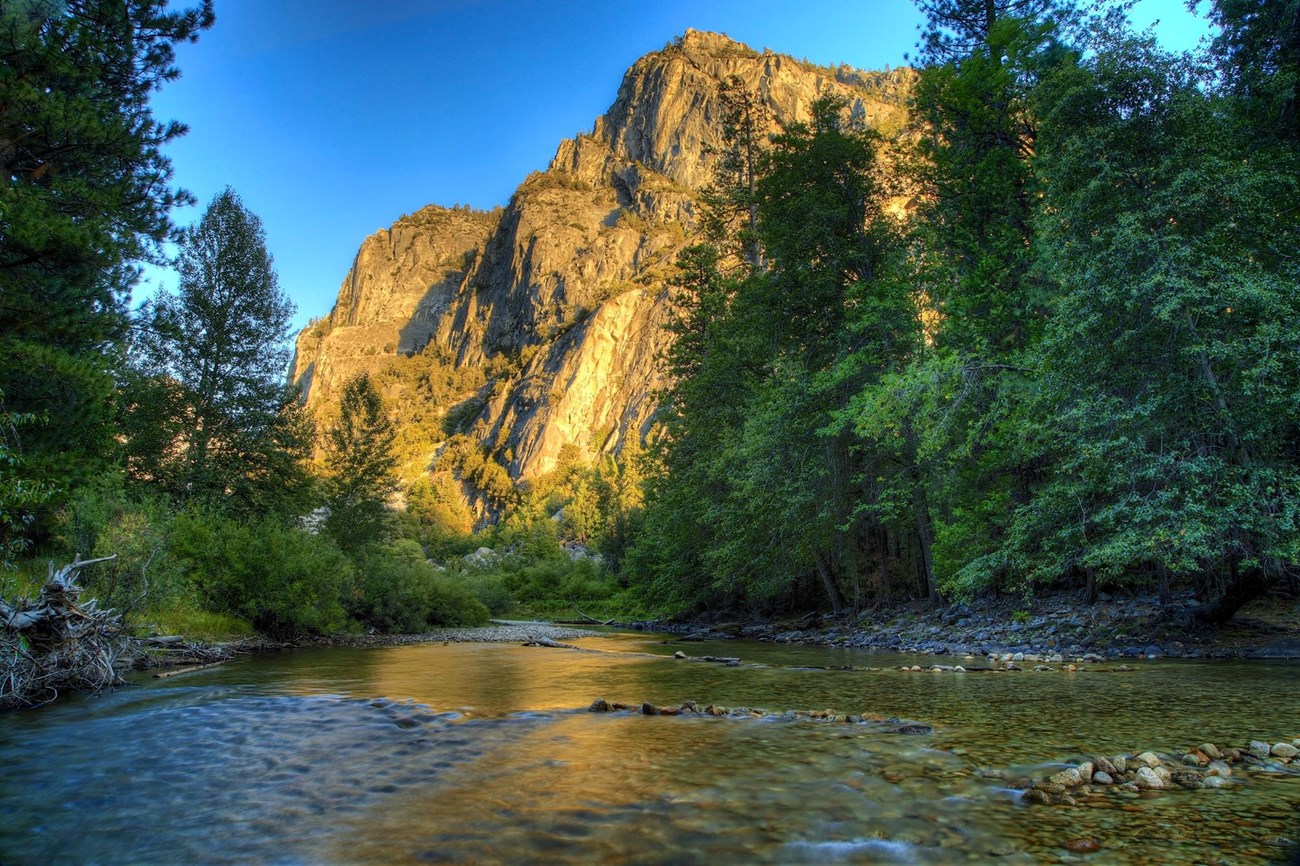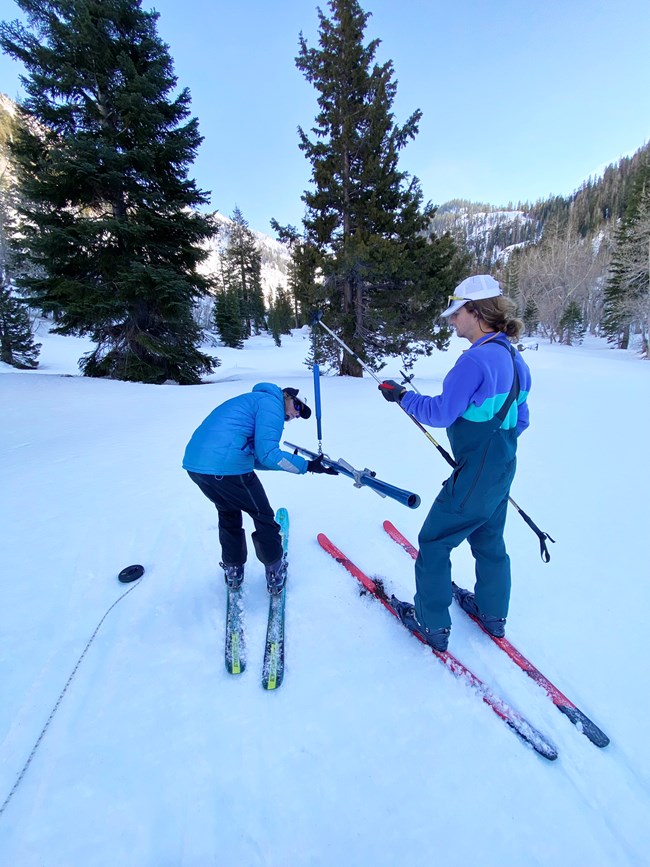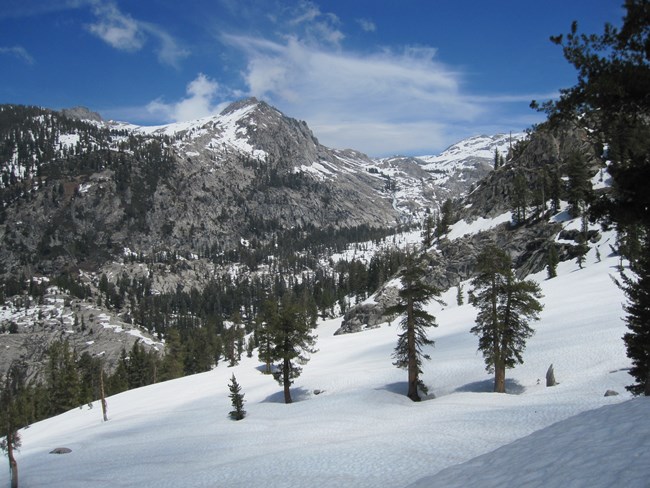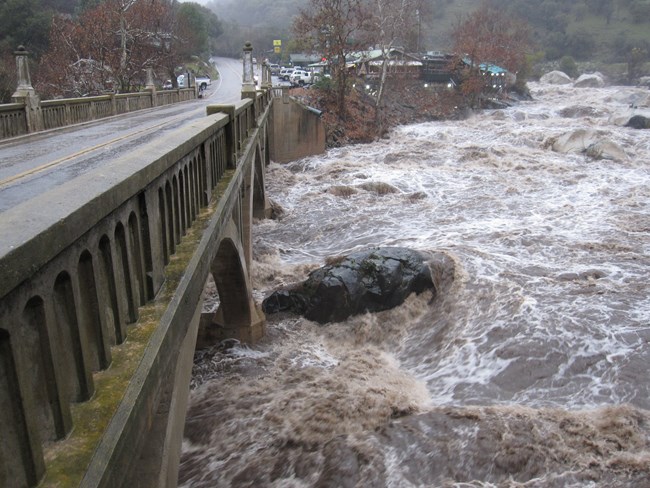
Photo courtesy of Bob Nelson These parks contain the headwaters of three major rivers – the Kings, Kaweah, and Kern. Rivers and streams are the major transporters moving snow meltwater downslope to lakes, meadows, forests, and foothill shrublands and oak woodlands. Beyond park boundaries they transport water to reservoirs where it is distributed to farmlands, cities, industries, and wildlife refuges in California’s Central Valley. About 60% of California’s fresh water (and 75% of its agricultural water) comes from the Sierra Nevada snowpack. 
NPS Photo - Joshua Flickinger What is hydrology?Water is a major driver of where plants and animals live in the Sierra Nevada. Hydrology is the study of water and its interactions with the landscape. Precipitation falls on these parks as rain or snow, some of which immediately runs into lakes and rivers. Some is stored in snowpack or groundwater, used by plants, or evaporates back into the atmosphere, only to fall somewhere else. The science of hydrology studies the processes that control how much water flows into our streams, how much is stored underground, how much moves through the landscape, what the water quality is, and the ways it is recycled in the natural environment. 
NPS Photo - Linda Mutch Climate Change Impacts on HydrologyClimate change is having profound effects on water resources in the Sierra Nevada and the ecosystems that have evolved within a snowmelt-driven hydrologic system. One of the most widely observed trends that will continue to affect the hydrologic cycle is an increase in air temperatures. The region's climate has warmed 1.4 to 1.8°F (0.8-1.0°C) over the past 100 years, and there is scientific consensus it will continue to warm. 
Adapted from a presentation by David Herbst, Sierra Nevada Aquatic Research Lab, Marine Science Institute, UC Santa Barbara. 
NPS Photo - Tony Caprio Climate change increases risk of severe storms and floods.Although drought has been a prevalent pattern in the past decade, the risk of severe floods has also increased with climate change. Recent research indicates that climate change has doubled the likelihood of precipitation events capable of producing catastrophic flooding, and larger increases are likely due to continued warming. Warmer air can hold more moisture. Runoff in the future storm scenario is 200 to 400% greater than historical values in the Sierra Nevada because of increased precipitation rates and decreased fraction of precipitation as snow. And megastorms are also likely to occur more often: Extreme flood events that historically occurred once every two centuries could occur approximately three times per century. Learn MoreReferencesNational Park Service. River Monitoring. Web page for Sierra Nevada Network Inventory & Monitoring Program. Accessed 22 August 2022. |
Last updated: October 4, 2023
